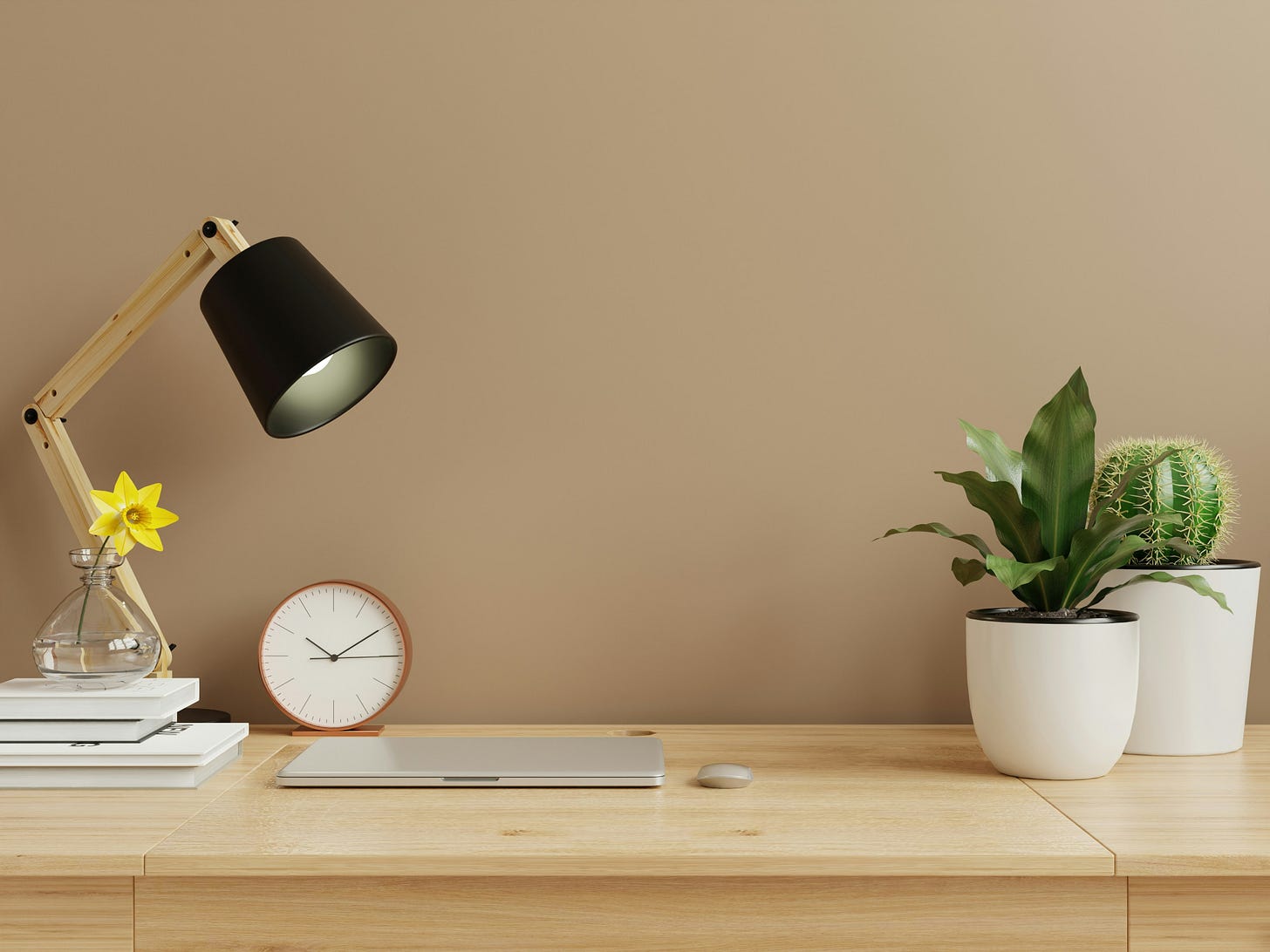
Today’s letter is short, sweet, and actionable. It covers an approach that has been helpful for my clients and for myself: setting two timers.
When we set two timers during an activity, the first timer is to notify us that we will need to shift to another activity soon and the second timer tells us that it’s time to make the shift. Here are a few examples of how this might work:
End Your Workday On Time
Closing routines help us to finish our tasks for the day and set ourselves up for success for the next day. If you work a 9-5 job, you might set a pop-up notification for 4pm to remind you to start closing up your day. This might look like responding to any important emails, finishing tasks you’re working on, and tidying up your workspace. That way when your workday ends—which is a sort of timer in itself—you’re not caught off guard in the middle of an activity, which might prompt you to overwork.
Close Up Shop at Home
You might also have a closing routine at home, where at a certain time you shift to closing up your home for the night. Kris and I have a set of nighttime chores we complete each night (washing dishes, setting up coffee for the morning, taking Friday outside to pee, and giving the cats treats). Since I often go to bed earlier than Kris does, once I start feeling myself get sleepy, I ask Kris if they want to do nighttime chores together or if they want to do them alone. Whether I do half the chores and leave half for Kris, we do them together, or Kris does them all, the cue for our routine is when I start getting tired. While this initial “timer” of my sleepiness may kick in at 9pm or 10:30pm, listening to it helps me to limit overextending myself past my physical limits by doing chores when I’m overtired.
Create a Buffer
Let’s pretend that you’re working on a long-term research and writing project and you have 2 hours to work on your project a few times a week (this setup is actually very common!). Regardless if you split those 2 hours up into four Pomodoro sessions or you work straight for 2 hours, if you’re experiencing a state of flow or even just in the middle of a sentence, you might hesitate to step away from your work when your timer goes off. Instead of slamming your laptop shut and rushing to a meeting when your time runs out, you can set “future you” up for success by scheduling a first timer for even just five minutes before you need to close for the day to jot down where you want to start when you pick the project up again during your next session. When you’re working on a long-term project, it can also boost your mood to track your progress and note what you accomplished during your work session, so you might choose to reflect using a template of questions such as, “What did I do today,” “How did I feel while I did it,” “What did I learn that I can apply to the future,” etc.
Here are some of the ways I’ve used two timers before:
10 minutes to draft up a social media post and 5 minutes to complete final edits
90 minutes to work on my dissertation and 10 minutes to reflect and plan for my next session in my dissertation journal
Shifting away from client work by 3pm on Friday so I can reserve at least 1 hour to plan my schedule for the next week and fill out my bullet journal before I stop working for the week
I want to encourage you to take what works and leave the rest from these tools (you can read more about hacking the Pomodoro Method in my recent letter here). While you might prefer to use actual timers, you might also listen to your body as a cue that it’s time to shift from doing one activity to another (like me with my nighttime routine). If you do give using two timers a try, I hope it can enable you to limit overworking and help you shift from work to rest with more ease.
Take care and talk soon,
Dr. Kate




Excellent. Concise et actionnable, i’ll try from tomorrow!
This is wonderful for those who tend to push it as well as those (guilty!) who always think they have more time than they have.